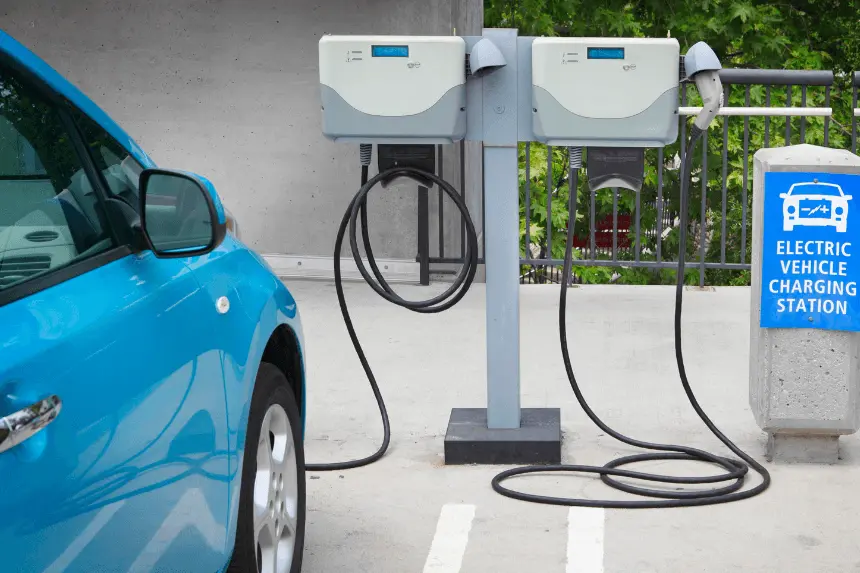A private driver in Guangzhou says, “I drive an electric car because I am poor.” The other one adds that EV is the obvious variant due to its cost reduction factor and environmental factor. The electric vehicles (EVs), to a large extent, remain a luxury item in most quarters of the globe. But the dominance of China’s electric vehicles has reversed this story. Last year in China, close to half of all cars sold were electric. This massive usage has popularized EVs, making them ordinary cars and not unique.
- What triggered China to turn toward Electric Vehicles?
- Who Were the Leading Planners of the Chinese EV Strategy?
- How Were Government Policies One of the Drivers of Growth?
- How did the Battery Industry of China contribute?
- How Are Chinese EV Startups Like XPeng and Nio Disrupting the Market?
- How are EVs a Fiscal Miracle in China?
- What Are Western Countries Doing to China’s EV Boom?
- What is the Question of Security When it Comes to Chinese EVs?
- Is China to Take the Lead in the Global EV Forever?
- Final Thoughts on China’s Electric Vehicle Dominance
What triggered China to turn toward Electric Vehicles?
The origins of China’s EV could be linked to government planning in the early 2000s. Through leadership, it was identified that although foreign brands had monopolized the internal combustion engines business, the opportunity existed to advance to electric vehicles, and this was a way of having a direct jump into business. It was a concept that was meant to transform the automobile industry literally. The biggest push was in the 2010s when China started investing billions to create an ecosystem of EVs, the batteries, and infrastructure along the incentives to purchase them. Here is the link to our article on Electric Vehicles
Who Were the Leading Planners of the Chinese EV Strategy?
Wan Gang is one of the notable exceptions; he is a German-trained engineer and was later China’s Minister of Science and Technology. He took the challenge to switch to electric as he knew that the Chinese companies were behind in the ordinary car production. Such startups as BYD and XPeng started to thrive with government support. Such companies also focused on innovation with well-developed supply chains and the availability of skilled labor. Thus, the dominance of China’s electric vehicles had started to plant its roots both internationally and on the home front.
How Were Government Policies One of the Drivers of Growth?
The investment of the government has been realistic. Since 2009, it has invested more than a quarter-trillion dollars (or over $230 billion) in the EV industry. The subsidies focused on the consumer, car manufacturing industries, utilities, and battery firms. Consumers were rewarded for handing over their fossil-fuel cars. Production of automakers was supported in terms of R&D. The growth of infrastructure soared, and the high-charge network in metropolises made the use of EVs realistic.
How did the Battery Industry of China contribute?
The most important part of any EV ecosystem is batteries. Instead, China produced national champions such as CATL, which currently provides EV batteries to one-third of the world. Domination in the sphere of lithium refining, cell production, and recycling, as well as the global distribution of Chinese manufacturers, has made China the center of battery technology. It is frequently remarked that the key to an EV battery is China. It is one of the main competitive advantages and a pillar of China’s electric vehicle dominance.
How Are Chinese EV Startups Like XPeng and Nio Disrupting the Market?
XPeng and Nio startups have contributed to supplying a high-level model at mid-level prices. As an example, using another Chinese vehicle supplier, XPeng, Mona Max provides driverless functionality, voice, and entertainment, and costs approximately 20,000 dollars. These firms are using a blend of consumer knowledge and technology innovation in selling to young and urban consumers. They have a Silicon Valley-style presence in their showrooms and headquarters, with a combination of innovativeness and experimentation that encourages talent.
How are EVs a Fiscal Miracle in China?
Other than reduced running expenses, the Chinese EV customers are given other financial incentives such as free car registration charges, cuts in charging prices, and exemptions from taxes. In the case of ride-hailing drivers, EVs are an affordable economic decision for many. One driver remembers having to pay four times more for petrol. Battery swapping facilities that are initiated by companies such as Nio will also save on charging time, making EV ownership all the more convenient.
What Are Western Countries Doing to China’s EV Boom?
As much as the West is content with the strides that China has made in the EV sector, there is increased apprehension. The United States, the European Union, and Canada have applied tariffs in order to protect their industries. Such nations consider the subsidy-based model of China as non-competitive. In the meantime, the United Kingdom is more open and admission to its market of such brands as BYD and XPeng. Nevertheless, the pressure is no doubt that the dominance of the Chinese electric vehicle will only keep growing due to the global demand for affordable EVs.
What is the Question of Security When it Comes to Chinese EVs?
Chinese EVs that integrate with smart technology have raised some concerns among critics since such vehicles may be a risk to national security. The fear that the remote updates and data exchange with the concept are subject to manipulation has been raised. But Chinese makers are emphasising data security. As an illustration, BYD focuses on local data carriers and international standards. The discussion resembles previous scandals on Chinese telecom equipment and social media.
Is China to Take the Lead in the Global EV Forever?
The speed of China is a fact. Not only are its manufacturers exporting EVs, but they are even establishing international plants. The necessity for an affordable electric vehicle will skyrocket in 2030 when fossil-fuel vehicles are prohibited in most countries. Since they already have the advantage of time, Chinese manufacturers can easily bridge this gap. Even then, things are not rosy, quite yet; it is still global politics in the trade, not excluding local technological weapons of the West.
Final Thoughts on China’s Electric Vehicle Dominance
The emergence of the superiority of China’s electric vehicle dominance is built on the scenarios of strategic planning, huge investment, and endless invention. Where most Western countries are arguing about how quickly this transition has to happen and at what cost, China has already transformed its automaker industry and is ahead of the global race. China’s electric vehicle dominance will be maintained or not depending on the responses given by the rest of the world, both in policies as well as actual investment and other competitive delivery. The EV race is not even close to completion, but right now, China’s electric vehicle dominance firmly leads it.








